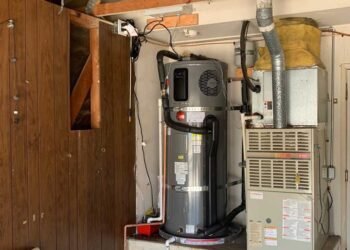When purchasing a home for you and your family there are factors that go into your decision-making process whether it’s the interior design, the location, or how close it is to a school. As the list goes on, considering the home’s actual structure is a key priority when trying to find an appropriate home to live in and have sufficient shelter. The purpose of this guide is to help you identify common construction flaws in order to ensure home safety and prevent the risk of serious concerns from house defects.
Understanding Construction Flaws
Construction flaws can range from all kinds of different problems and defects that took place during the construction process. These defects start to become worse and more prevalent as time goes on and cause the value of your home to decrease.
According to a Houston residential construction defects attorney, some common types of construction flaws include:
- Water intrusion
- Unsuitable site selection or preparation
- Incorrect installation of windows and doors
- Misapplied stucco or other exterior finishes
- Inadequately installed roofing
- Mold development due to water infiltration
- Design flaws in architecture that compromise structural safety
- Insufficient structural support
- Settling and cracking of the foundation
- Floor warping
- Wall cracking and deterioration
- Defective plumbing, electrical, or HVAC systems
Tools and Materials Needed
Evaluating a home’s safety can be done in a couple of different ways. One efficient way is through certain tools and materials. Basic inspection tools can help you identify any non-visible defects within your home and see if there are any reasons for concern and further inspection.
Some great tools to use are:
- Level
- Measuring tape
- Flashlight
- Moisture meter
- Voltage tester
- Safety equipment
- Gloves
- Safety glasses
- Dust mask
Conducting a Visual Inspection to Identify Common Issues
Your next best bet is to conduct a visual inspection of what you can visibly see. Taking time to inspect the exterior and interior of the home can help ensure all aspects of a house are safe for you and your children.
- Structural problems: Cracks in the walls and ceilings or uneven floors will help you be aware of any future problems that may arise.
- Electrical safety checks: Outdated wiring and overloaded circuits can help prevent future fire hazards and electrocution risks.
- Plumbing Issues: Any leaks, water stains, or poor water pressure can lead to health risks involving mold growth, and is important to catch it before continued growth.
- HVAC system evaluation: Identifying any airflow problems or unusual noises can help find opportunities for improvement in indoor air quality and damaged parts
Documenting Findings
After evaluating the home, it is important to keep a record of all of your findings. Creating a checklist of repairs can help you tackle which issues to address first, whether these are urgent repairs, regular maintenance, or a clear overview of what needs attention. This also makes it easier for homeowners to identify any reoccurring issues or patterns that may reveal any larger problems. Additionally, having a comprehensive record can enhance the value of a home and let future prospective buyers know about the upkeep history and the care put into the home. Keeping written records will ultimately promote a safer living environment for your family.
When to Call a Professional
Although a DIY inspection is always a good first step, it is important to know that it does come with some limitations. After identifying issues within your home, seeking a qualified professional is crucial in knowing the next best steps. Choosing qualified professionals who can help inspect and perform the appropriate tests can help you reach better results. They bring not only expertise but also experience in identifying potential risks that may not be visible to the untrained eye. Furthermore, they often have access to industry-standard practices and tools, ensuring that the inspection is comprehensive and adheres to local building codes and safety regulations.
Engaging professionals can lead to better outcomes, helping you make informed decisions about repairs or renovations. This proactive approach not only enhances the safety and functionality of your home but also potentially saves you time and money in the long run by addressing issues before they escalate.
Preventive Measures
Implementing regular maintenance helps keep your home in optimal condition. Creating monthly, quarterly, or yearly maintenance tasks can ensure you are continually improving your home.
Seasonal inspections can also help you continue to be proactive before you notice any issues. As weather changes occur, this can also take a toll on your house. Fixing your house based on seasonal changes can help ensure your house is in tip-top shape for any kind of weather conditions.
Additionally, making upgrades to your home can enhance safety for those living in the house, and making improvements to your living environment can ultimately foster a sense of responsibility and care in your home. These proactive steps will continue to increase the value of your home and prepare it for any future buyers.
Importance of Identifying Construction Flaws
Building a home and parenting a family it is important to ensure the safety, functionality, and longevity of any home. Identifying construction flaws can proactively ensure your family is safe from any unforeseeable issues or hazards that may have occurred during the construction of your home. If left unchecked these could lead to more severe problems, even including potential health risks. By being vigilant as homeowners you can identify minor concerns before they escalate to something bigger.
In conclusion, maintaining a safe home environment is a continuous effort that requires attention and care. Prioritizing these fixes and construction flaws will be able to create a safe and secure space for your family. This commitment to safety not only protects your investment and the value of your home but also fosters peace within your home, ultimately allowing you to enjoy it to the fullest.












